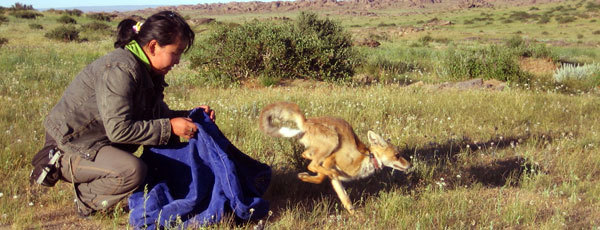Wildlife of the Mongolian Steppe
- Ulaanbaatar, Mongolia
- Volunteer Vacations

| from $3,395* per person | 14 Days | May, June, August, September |
| Simple accommodations | Exertion level: 6 | |
| Operator: Earthwatch Institute | 10 people max | |
Loading map, please wait...
Locations visited/nearby
Mongolia
0 testimonials about this trip.
1 testimonial about the provider, Earthwatch Institute:
-
Reviewer: L. Reifschneider
located in
St. Louis,
MO
USA
Elephant conservation is what drives my travel destinations. However, I always come home counting the blessings of new friends and an understanding of a culture and way of life I possibly would otherwise have never been introduced to. Through the Earthwatch projects I participate in, I am learning just how big and wonderful this world is.
Itinerary
On the ExpeditionExplore the lives of unique grassland animals, from lesser kestrels to Siberian ibex, to help conserve their wilderness home.
Your team will enjoy an extraordinary perspective of the desert-steppe environment in central Asia, as well as visits with local herders for a unique cultural experience. You will work with a well-trained research staff to observe the ecology and movements of a diversity of grassland animals. In addition to argali sheep, you will help explore the ecology of Siberian ibex, mountain goats with scimitar-shaped horns, and cinereous vultures, the largest raptors in Eurasia. You will also study the lives of globally threatened lesser kestrels, two species of hedgehogs, and prey species, from lizards to steppe rat snakes (aka Dione rat snakes or Pallas's colubers), to leaping jerboas. (Volunteers who prefer not to work with the snakes will have plenty of other ways to keep busy on other aspects of the research.)
In your recreational time you will be free to explore this wilderness landscape in a way few people ever can, and you will also have the opportunity to experience Mongolian culture in the capital city of Ulaanbaatar. This project requires a reasonably good fitness level due to its active nature and the remoteness of the location, and familiarity with hiking and camping.
Meals and Accommodations
Team members share quarters in traditional Mongolian gers, cozy and colorful oases from the vast steppe, or in smaller camping tents. A cook will prepare meals (with your help serving and cleaning up), a mixture of familiar and local fare, including Mongolian "barbecue" cooked with hot rocks. The field camp includes ‘sun showers’, solar-powered lights, and outhouses with pit toilets. You will travel to the field site by train and four-wheel-drive van from Ulaanbaatar, a spectacularly scenic ride.
About the Research Area
Ikh Nart was established in 1996 to protect 164,566 acres of rocky outcrops in a region of northwestern Dornogobi Aimag, known as Ikh Nartiin Chuluu. At about 4,000 feet above sea level, the region is a high upland covered by semi-arid steppe vegetation. Permanent cold-water springs are available in some of the several shallow valleys draining the reserve.
The flora and fauna present in the research area are a mix of desert and steppe species. Vegetation is sparse, with shrubs, scrub vegetation, and turfy grasses dominating. Different plant communities can be found around oases and streams, on rocky outcrops, and in other areas.
Large mammals in the region include argali, ibex, goitered gazelles, Mongolian gazelles, Asian wild asses, and wolves, several of which are locally or globally threatened. Common birds include cinereous vultures, saker falcons, steppe eagles, upland hawks, black kites, little owls, pied wheatears, white wagtails, horned larks, Guldenstadt’s redstarts, red-billed choughs, and Daurian partridges. Of the many small mammals and reptiles, volunteers may see Tolai hares, Pallas’ cats, red foxes, corsac foxes, Mongolian gerbils, voles, hamsters, jerboas, toad-headed agamas, Mongolian racerunners, Central Asian vipers, and Pallas’ colubers.
More information from Earthwatch Institute:
- View trip on provider's website
earthwatch.org/expeditions/wildlife-of-the-mongolian-steppe… - Company profile, experience, and history
- View all of their trips
- Email this trip page to a friend
-



Comments from Facebook